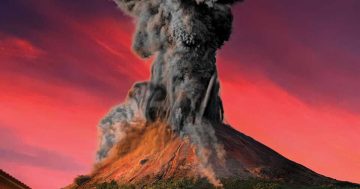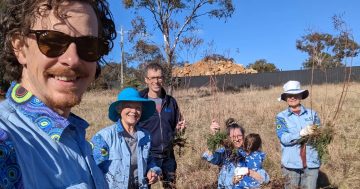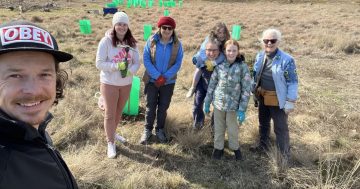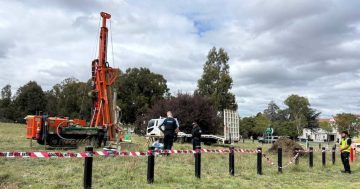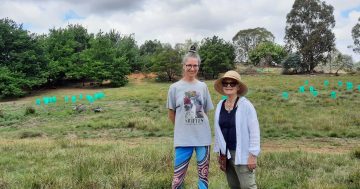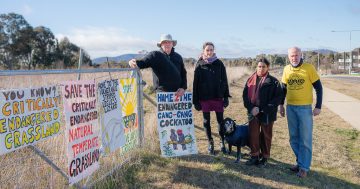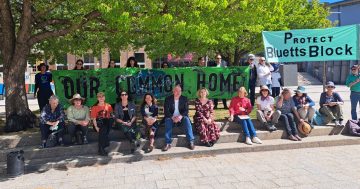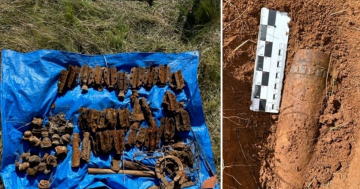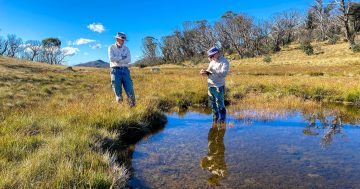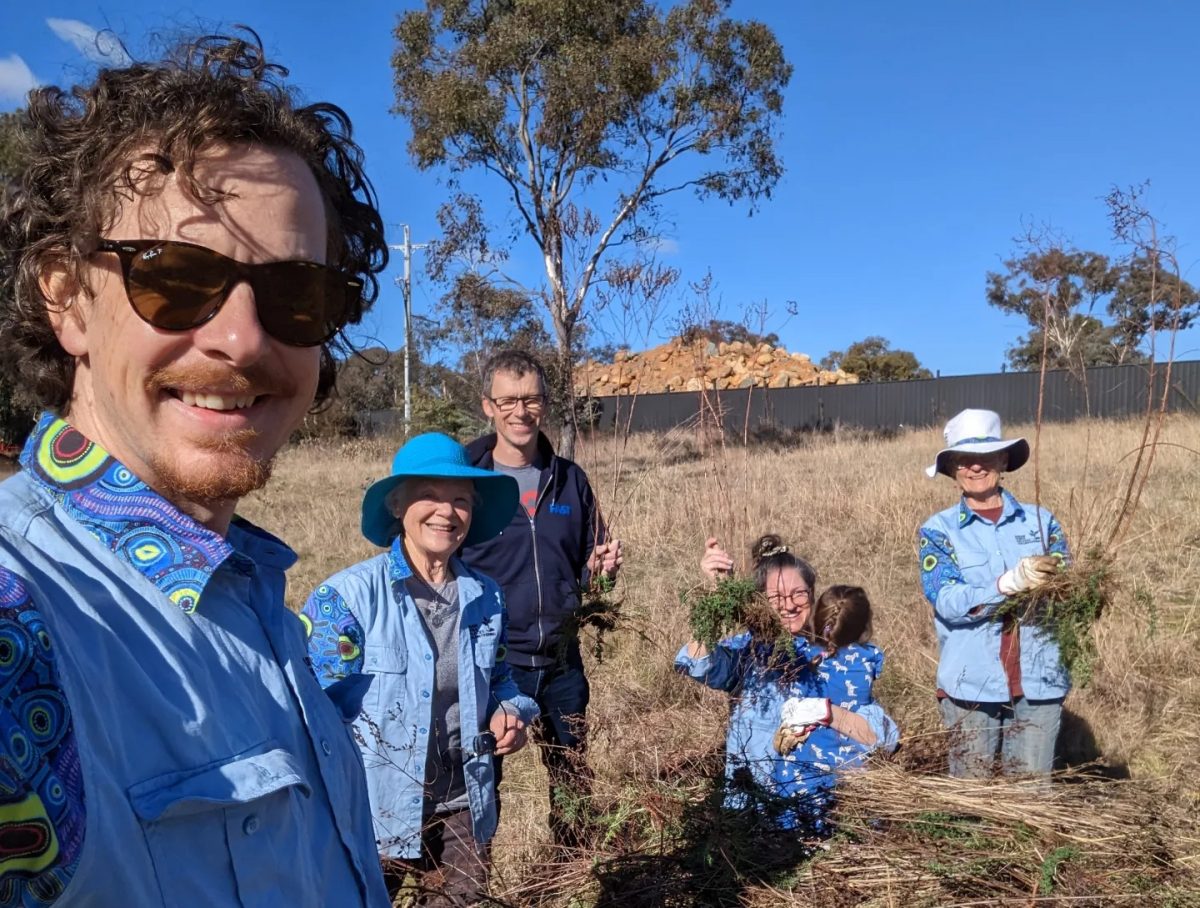
The Ainslie Volcanics Weeders: Danny Jowers-Blain, Marianne Albury-Colless, Peter Boreham, Amy Blain, Bertie Jowers-Blain and Ann Hare. Photo: Danny Jowers-Blain.
Ainslie resident Amy Blain and a small but dedicated group of around five volunteers have been regularly travelling to an area at the foot of Mount Ainslie since last December (2022).
Officially named the Ainslie Volcanics site, the part-grassland, part-woodland area stretches from the corner of Quick Street and Limestone Avenue towards Ainslie Village.
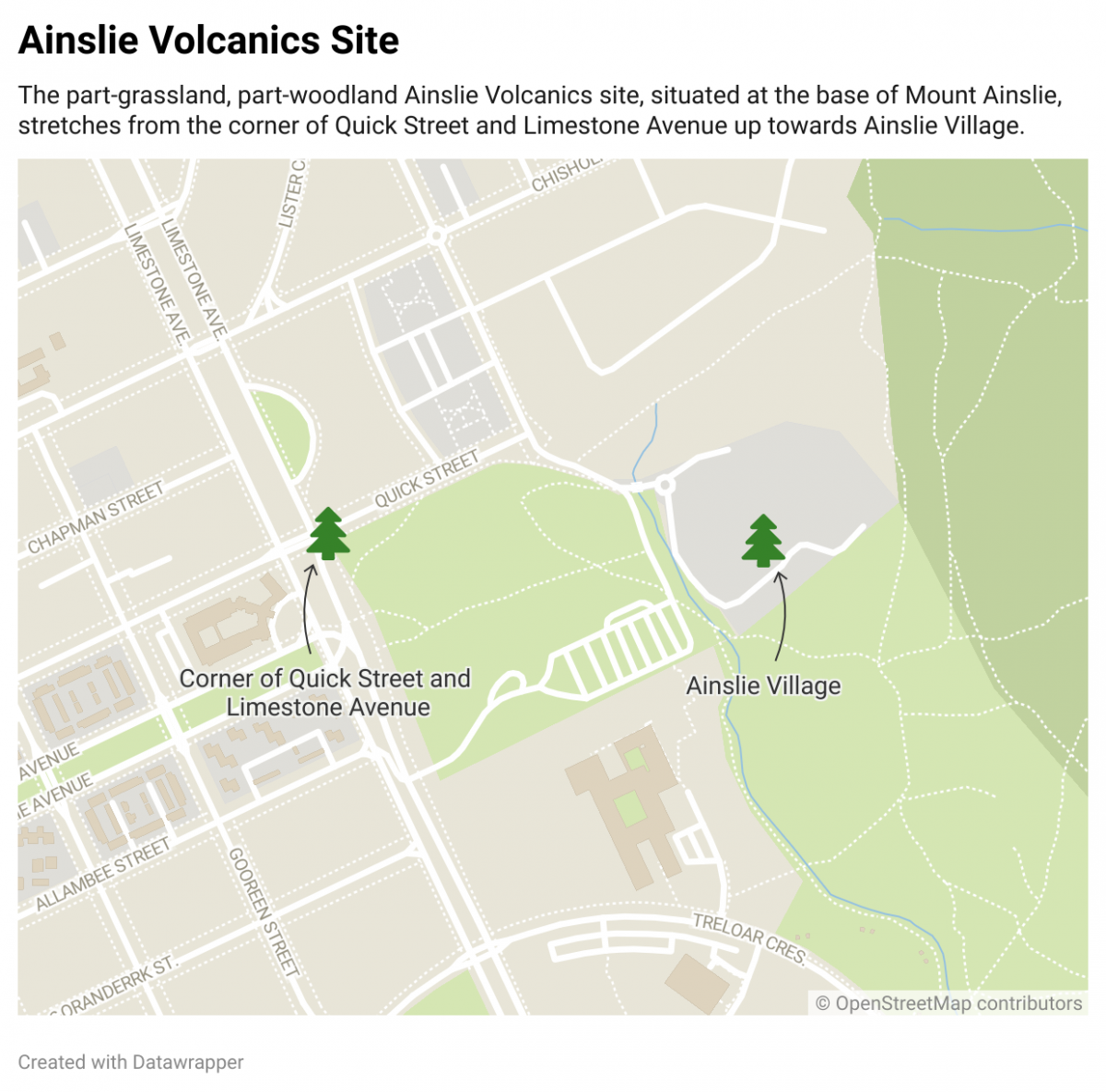
Petitioners want the site on Limestone Avenue to become a nature reserve. Image: Region.
Ms Blain and her volunteer group, Ainslie Volcanics Grassy Woodland Weeders, have been going there for the last seven months to remove several invasive weed species.
“When our group started on that site … I was like, ‘Oh, isn’t it so pretty? It’s so yellow out there’, and [another volunteer said], ‘Oh no, that’s really bad,'” she said.
The pretty yellow colour Ms Blain saw were the flowers of a weed species, St John’s wort, of which Ms Blain and her group have since removed “huge piles”.
“It’s very satisfying to get out there and actually pull those weeds. It’s surprisingly addictive,” she said.
“It just feels really good to get out there and do something that we know is going to be really good for those ecosystems and actually see that transformation since having worked down there … It really is becoming more like a grassland since the St John’s wort has been taken out.”
Ecologist Rainer Rehwinkel said the Ainslie Volcanics site was not just any grassland and was, in some ways, even more important than the adjacent Mount Ainslie Nature Reserve.
“There’s still remnants of the [box gum] woodland on the site [and] there’s certainly derived grassland on the site,” Mr Rehwinkel said.
The Environment Protection and Biodiversity Conservation Act lists box gum woodland and grassland derived from clearing the woodland as “critically endangered”.
Mr Rehwinkel said it was possible some of the grassland was natural rather than derived, but both variations had the same federal government classification.
“It’s really, really difficult to determine [but] natural grassland also comes under a critically endangered ecological community,” he said.
“Essentially, there’s at least one, if not two, critically endangered ecological communities, as listed under Commonwealth legislation.”
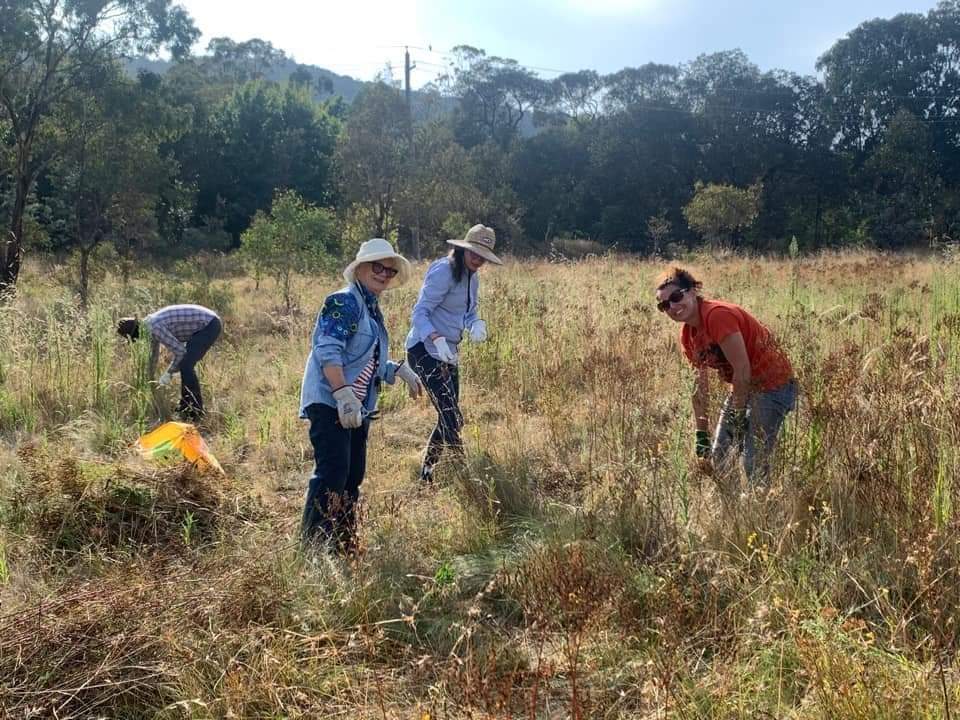
Amy Blain and her volunteer group regularly visit the Ainslie Volcanics site to remove invasive weeds. Photo: Supplied.
While the nearby Mount Ainslie Nature Reserve also contains a large area of critically endangered box gum woodland, Mr Rehwinkel said its ecological value was different.
“When national parks and nature reserves were set aside, they were always set aside on higher slopes, [which is] great for flora conservation,” he said.
“In the last 20 or so years, people have been focusing on conserving lands in the lower parts of the landscape … and those parts are so, so much more important for fauna.”
He said several threatened reptile, insect and bird species thrive best in these landscapes, including the grassland earless dragon and Key’s Matchstick grasshopper.
“That sort of country has traditionally been used for farming, suburban and urban development, and so little is actually in nature reserves,” Mr Rehwinkel said.
“Any patch of lowland country like the Ainslie Volcanics site is certainly worthy of becoming part of a nature reserve system.”
A petition organised by Ms Blain is seeking to do just that.
The petition was tabled in the Legislative Assembly with 403 signatures (Ms Blain said she has 178 more in hard copy) by Jo Clay MLA this month and has also been supported by the Australian Conservation Foundation Community Canberra, the Conservation Council and Friends of the Grasslands (of which Mr Rehwinkel is a current member).
“The community is very concerned about it and wants to make sure that we actually keep this little pocket as a sanctuary and make it as good as it can be,” Ms Blain said.
The petition has called for the ACT Government to incorporate two blocks of land into Mount Ainslie Nature Reserve and to petition the Commonwealth to relinquish a third site.
“With the recognition and profile of a reserve, that will give it the protection from any further development and take it back to where it needs to be as a biodiversity haven,” Ms Blain said.
The petition also states the area has Aboriginal heritage values associated with its outcrops; however, this was disputed in 2021 during a nearby residential development process.
Ms Blain’s petition has been referred to an ACT Government legislative committee for a response.











